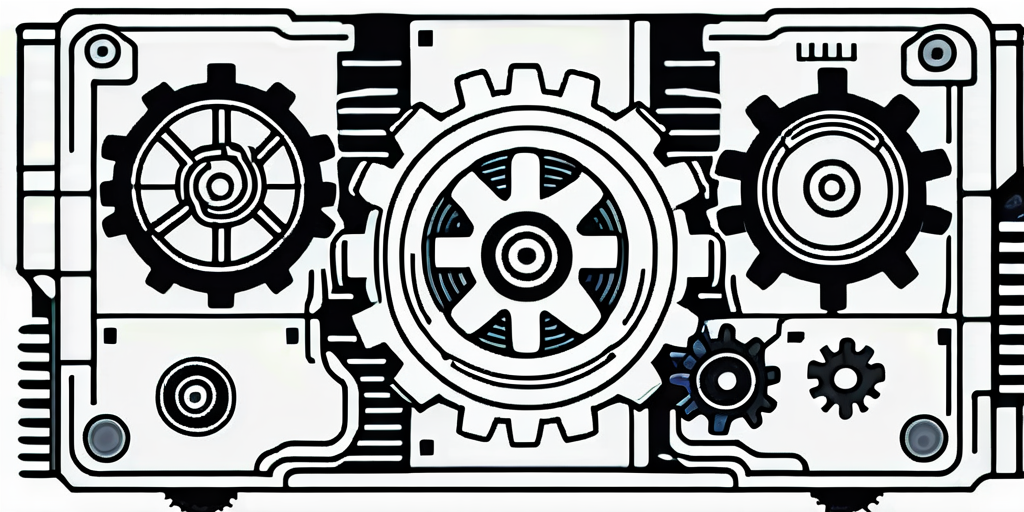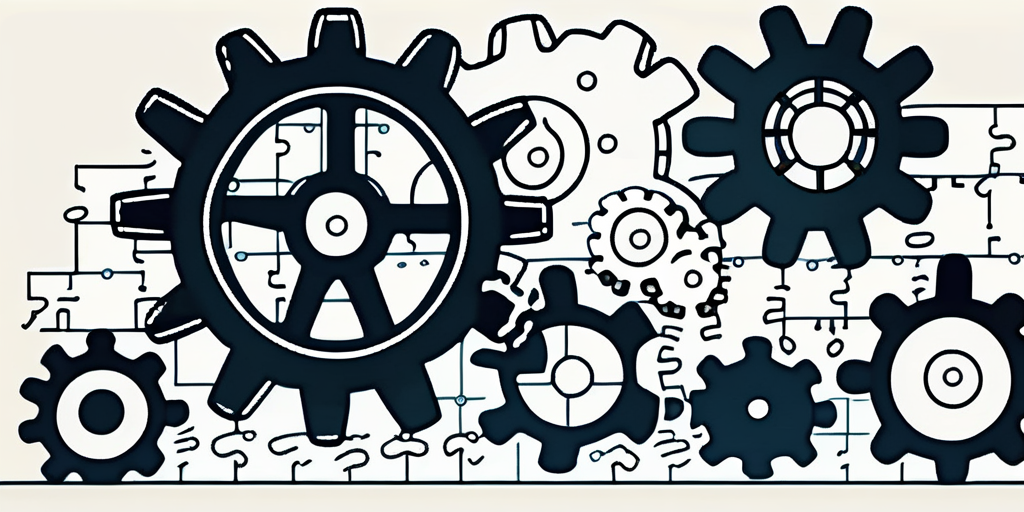Evaluating the ideal chunk size for a rag system

Retrieval augmented generation systems have gained significant attention in the field of natural language processing. These systems combine the power of retrieval-based models and generation-based models to generate high-quality responses. However, one crucial aspect that plays a significant role in the performance of these systems is the chunk size used during the retrieval process.
Understanding Retrieval Augmented Generation Systems
Retrieval augmented generation systems are designed to improve the quality and relevance of generated responses. These systems use a two-step process: retrieving relevant information from a knowledge base and then generating a response based on that information. The retrieval step ensures that the generated response is grounded in real-world knowledge, making it more informed and accurate.

In recent years, retrieval augmented generation systems have shown promising results in various tasks, including question answering, dialogue systems, and summarization. However, determining the ideal chunk size for the retrieval process is crucial to optimizing performance.
The Role of Chunk Size in Retrieval Augmented Generation
The chunk size refers to the number of words or tokens used in each retrieval query. Smaller chunk sizes capture more precise and contextually focused information, while larger chunk sizes provide a broader context. Striking the right balance is essential to ensure the generated responses are both accurate and comprehensive.
For example, in a question-answering system, a smaller chunk size may be more suitable when the question requires specific details or facts. On the other hand, a larger chunk size may be preferred in a dialogue system where a broader context is necessary to maintain a coherent conversation.
Additionally, the chunk size impacts the efficiency of the retrieval process. Larger chunk sizes may require more computational resources and time, while smaller chunk sizes may result in more frequent retrieval queries. System designers must consider these trade-offs when determining the optimal chunk size for a given task.
Key Components of Retrieval Augmented Generation Systems
Retrieval augmented generation systems consist of two main components: the retrieval model and the generation model. The retrieval model is responsible for retrieving relevant information from a knowledge base, while the generation model takes this retrieved information as input and generates a response based on it.
The retrieval model uses various techniques, such as keyword matching, semantic similarity, or neural network-based approaches, to identify and retrieve relevant information. These techniques allow the system to effectively navigate the knowledge base and extract the most pertinent information for generating a response.
Once the retrieval model has obtained the relevant information, it is passed on to the generation model. The generation model, typically based on sequence-to-sequence models or transformers, leverages the retrieved information to generate a response that is coherent, contextually appropriate, and informative.
By combining the strengths of both the retrieval and generation models, retrieval augmented generation systems achieve a more robust and accurate response generation process. These systems have the potential to enhance various applications, including virtual assistants, customer support chatbots, and information retrieval systems.
The Importance of Optimal Chunk Size
Choosing the optimal chunk size is essential to achieving the best performance in retrieval augmented generation systems. The chunk size determines the granularity of information captured during the retrieval process, impacting the relevance and accuracy of the generated responses.

Impact of Chunk Size on System Performance
The chunk size directly affects the quality of the retrieved information, which, in turn, influences the quality of the generated responses. A smaller chunk size can result in more precise and contextually relevant information, leading to more accurate responses. For example, in a conversational AI system, a smaller chunk size can ensure that the generated responses are closely aligned with the user’s query, enhancing the overall user experience.
On the other hand, larger chunk sizes may provide a broader context but can lead to information overload and less focused responses. Imagine a scenario where a user asks a specific question, and the system retrieves a large chunk of information that includes irrelevant details. This can confuse the user and diminish the system’s effectiveness.
Therefore, striking the right balance between the granularity of information and the desired level of relevance and accuracy is crucial. By carefully selecting the chunk size, system developers can optimize the performance of retrieval augmented generation systems, ensuring that the generated responses are both informative and coherent.
Balancing Efficiency and Accuracy
Choosing the optimal chunk size also involves considering the trade-off between efficiency and accuracy. Larger chunk sizes may require more computational resources and time to process, which can impact the overall system efficiency. For instance, in a real-time chatbot application, where speed is of utmost importance, a smaller chunk size might be preferred to minimize processing time and provide quick responses.
On the other hand, smaller chunk sizes, although more efficient, may lead to more frequent retrieval queries, increasing the computational overhead. This can be a concern in resource-constrained environments or high-traffic systems where minimizing computational costs is crucial.
Hence, it is important to evaluate and weigh the computational constraints against the desired level of accuracy to determine the ideal chunk size for a retrieval augmented generation system. By carefully considering the specific requirements and constraints of the system, developers can strike the right balance between efficiency and accuracy, ensuring optimal performance.
Methods for Evaluating Chunk Size
Quantitative Evaluation Techniques
One approach to evaluating the ideal chunk size is through quantitative evaluation techniques. These techniques involve systematically varying the chunk size and measuring performance metrics such as accuracy, relevance, and response quality. Quantitative evaluation provides objective measures to assess the impact of different chunk sizes on the system’s performance.
Common quantitative evaluation techniques include calculating precision, recall, F1 score, and comparing the system’s performance across different chunk sizes using statistical tests.
When conducting quantitative evaluation, researchers often utilize machine learning algorithms to automate the process of chunk size optimization. By leveraging algorithms such as grid search or random search, researchers can efficiently explore a wide range of chunk sizes and identify the optimal configuration for the system. This automated approach not only saves time but also ensures a comprehensive evaluation of chunk size impact.
Qualitative Evaluation Approaches
In addition to quantitative evaluation, qualitative evaluation approaches can provide valuable insights into the impact of chunk size on retrieval augmented generation systems. Qualitative evaluation involves human judges assessing and rating the quality of the generated responses. Judges evaluate factors such as coherence, relevance, and naturalness to provide a more holistic understanding of the system’s performance.
Analyzing the feedback from human judges helps to identify any limitations or biases in the system’s performance due to different chunk sizes.
Furthermore, qualitative evaluation can be enhanced by incorporating eye-tracking technology to monitor how users interact with the system outputs based on varying chunk sizes. By tracking users’ gaze patterns and visual attention, researchers can gain deeper insights into the cognitive processing involved in consuming information presented in different chunk sizes. This multimodal approach to evaluation offers a nuanced understanding of user preferences and cognitive load implications associated with chunk size variations.
Challenges in Determining the Ideal Chunk Size
Dealing with Variability in Data
Determining the ideal chunk size is not a straightforward task due to the inherent variability in the data. Different domains, genres, or datasets may require different chunk sizes to achieve optimal performance. The ideal chunk size for a retrieval augmented generation system may need to be fine-tuned for specific scenarios or applications.

Considering the variability in the data and the specific requirements of the task is crucial to accurately evaluate and determine the ideal chunk size.
Overcoming Computational Constraints
Another challenge in determining the ideal chunk size is the computational constraints faced by retrieval augmented generation systems. Larger chunk sizes may lead to increased computational requirements and longer retrieval times, impacting the system’s overall efficiency. On the other hand, smaller chunk sizes may result in increased computational overhead due to more frequent retrieval queries.
Finding a balance between accuracy and efficiency is crucial to provide optimal performance within the computational constraints of the system.
Future Directions in Retrieval Augmented Generation Systems
Potential Improvements and Innovations
As retrieval augmented generation systems continue to evolve, there is a growing interest in exploring potential improvements and innovations in determining the ideal chunk size. Researchers are developing new techniques to adaptively adjust the chunk size based on contextual cues, user preferences, or task-specific requirements.
Moreover, leveraging advanced machine learning techniques such as reinforcement learning or active learning can potentially improve the performance and efficiency of retrieval augmented generation systems.
The Role of AI and Machine Learning in Future Developments
The future of retrieval augmented generation systems lies in the advancements of AI and machine learning. These technologies enable the development of more sophisticated models that can adaptively determine the ideal chunk size based on various factors, including context, user feedback, and desired system performance.
Additionally, AI and machine learning techniques can help overcome computational constraints and improve the overall efficiency of retrieval augmented generation systems.In conclusion, evaluating the ideal chunk size for a retrieval augmented generation system is crucial to optimize system performance. The chunk size impacts the relevance, accuracy, and efficiency of the generated responses. Quantitative and qualitative evaluation techniques play a key role in determining the ideal chunk size, considering the variability in data and computational constraints. Future developments in AI and machine learning offer promising avenues for improving retrieval augmented generation systems and adaptively determining the optimal chunk size.